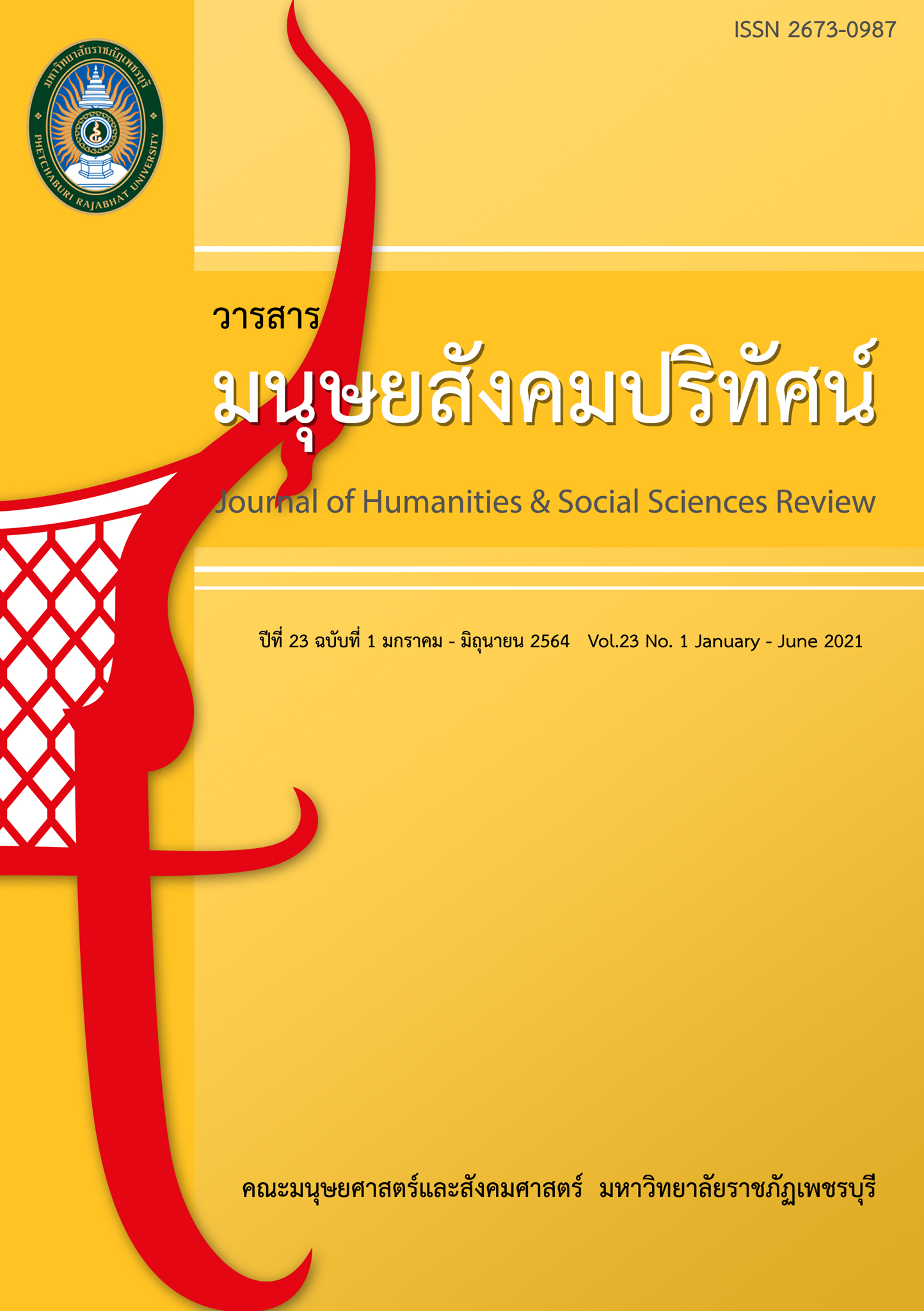Flirty Behavior of Thossakan from Ramayana Literature
Main Article Content
Abstract
Thossakan is the main character in literature because it is the cause of the war, which is the story's theme and is the moderator. Ravana's behavior makes the story fun and interesting. The article aimed to present flirty behavior of Thossakan’s from Thai Ramayana literature for those interested in literary and pantomime performancers to understand the behavior of Thossakan characters in order to be transmitted through the performance properly. From the study of Thai Ramayana literature, different expressions since the Ayutthaya period, it was found that Thossakan was Nonthok or Nonthuk, the giant who was murdered by Vishnu for committing an offense and became the son of Thao Lastian and Nang Ratchada. Thossakan was very powerful. The appearance was ten heads, twenty hands and twenty eyes. His siblings were Kumphakan, Phiphek, Khon, Thut, Trisian and Samanakkha. His wife was Nang Kanlaakkhi, Nang Mantho, Nang Pla, Nang Chang, Nang Sanom Phanton and Nang Sanom Sipton. The children were Banlaikal, Indrachit, Sida, Painasuriwong, Tosakhiriwan, Tosakhirithon, Suphan, Matcha, Sahatsakuman and Siprot. Thossakan died with Rama's arrow. From the literature, Thossakan’s roles were as follows: warrior, husbandship, leadership, loverism etc. Thossakan’s behavior from literature were as follows: lustfulness in women, arrogance and aggression, credulity and easy people trust, bully, flirting, vengefulness, beauty, impetuousness etc. Thossakan’s behavior divided into two categories: internal and external behavior. The behavior of lustful women was internal behavior, which was the behavior of flirting to support. Thossakan’s flirtatious behavior appeared into two episodes of the literature: when Thossakan flirted with Sida in Suan Kwan, after stealing Sida and when Thossakan wooed Nang Benayagai, mistaking her for Sida. Both episodes of this story were found in the Ramayana literature, the idioms of King Rama I and King Rama II. In addition, the episode of Thossakan flirting with Nang Sida was also found in commentary on the Ramayana literature in the Ayutthaya period. Thossakan’s flirtatious behavior was a literary sensation and flamboyant expression through acting. Such behavior was used to compare people who acted flirtatiously. When he didn't get what he wanted, he used force as a "giant flirt" which was derived from Thossakan’s flirting behavior as mentioned.
Article Details
1. Any views and comments in the article are the authors’ views. The editorial board has not to agree with those views and it is not considered as the editorial board’s responsibility. In case, there is any lawsuit about copyright infringement, it is considered as the authors’ sole responsibility.
2. The article copyright belonging to Faculty of Humanities and Social Sciences, Phetchaburi Rajabhat University are copyrighted legally. Republication must be received direct permission from the authors and Phetchaburi Rajabhat University in written form.
References
1. กรมศิลปากร. (2472). ประชุมคําพากย์รามเกียรติ์ ภาค 4 ตอนหนุมานถวายแหวน. กรุงเทพฯ: โรงพิมพ์โสภณพิพรรณธนากร.
2. กรมศิลปากร (2553a). โขนอัจฉริยลักษณ์แห่งนาฏศิลป์ไทย. กรุงเทพฯ: ปตท.
3. กรมศิลปากร. (2553b). บทละครเรื่องรามเกียรติ์พระราชนิพนธ์ในพระบาทสมเด็จพระพุทธยอดฟ้าจุฬาโลกมหาราช เล่ม 2 (พิมพ์ครั้งที่ 11). กรุงเทพฯ: โรงพิมพ์ครูสมิท บางคอแหลม.
4. เสาวณิต วิงวอน. (2555). วรรณคดีการแสดง (พิมพ์ครั้งที่ 2). กรุงเทพฯ: ศักดิ์โสภาการพิมพ์.
5. คทาวุธ กลิ่นพิพัฒน์. (2560). การศึกษาพฤติกรรมทศกัณฐ์จากวรรณกรรมสู่การแสดง: ทศกัณฐ์เกี้ยวนางgบญกาย. กรุงเทพฯ: สถาบันบัณฑิตพัฒนศิลป์.


